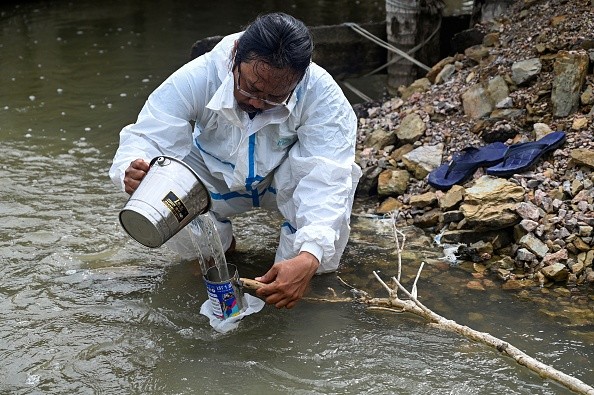In the last two decades, the total amount of microplastics dumped on the ocean floor has tripled; this increase is directly related to the kind and amount of plastic products that society consumes.
This is the main finding of a study conducted by the Department of the Built Environment of Aalborg University (AAU-BUILD) and the Institute of Environmental Science and Technology of the Universitat Autnoma de Barcelona (ICTA-UAB), which offers the first high-resolution reconstruction of microplastic pollution from sediments obtained in the northwestern Mediterranean Sea.
Microplastics deposited on the seafloor tripled in 20 years
 (Photo : CHAIDEER MAHYUDDIN/AFP via Getty Images)
(Photo : CHAIDEER MAHYUDDIN/AFP via Getty Images)

The historical evolution of this pollution source in the sediment compartment, and particularly the sequestration and burial rate of smaller microplastics on the ocean floor, are unknown, despite the fact that the seafloor is thought to be the final sink for microplastics floating on the water's surface.
This new study, which was published in the journal Environmental Science and Technology (ES&T), demonstrates that microplastics are retained unaltered in marine sediments and that the mass of microplastics trapped in the seafloor reflects the total amount of plastic produced globally between 1965 and 2016.
According to ICTA-UAB researcher Laura Simon-Sánchez, "the results specifically show that, since 2000, the amount of plastic particles deposited on the seafloor has tripled and that, far from decreasing, the accumulation has not stopped growing mimicking the production and global use of these materials."
Researchers explain that since they were deposited on the seafloor decades ago, the sediments under study have remained unchanged.
"This has allowed us to see how the accumulation of polyethylene and polypropylene particles from packaging, bottles, and food films, as well as polyester from synthetic fibers in clothing fabrics, has increased since the 1980s, but especially in the past two decades," says Michael Grelaud, ICTA-UAB researcher, as per ScienceDaily.
The combined amount of these three particle types is 1.5 mg per kilogram of sediment collected, with polypropylene being the most prevalent and polyethylene, polyester, and other materials coming in second and third.
Data from annual marine sediment records indicate that we are still far from accomplishing this despite awareness campaigns on the need to reduce single-use plastic.
Although smaller microplastics are very common in the environment, limitations in analytical techniques have prevented previous studies that focused on marine sediment from providing strong evidence about the levels of small microplastics.
In this study, they were identified by using cutting-edge imaging to quantify particles as small as 11 nanometers.
Do people and marine life both face health risks from marine microplastics?
Many people have seen images showing the negative effects larger plastics can have on marine life, such as pictures of dolphins tangled in plastic fishing gear or sea turtles caught in six-pack rings made of plastic, as per WHOI.
While the effects of larger plastics are well known, little is known about the effects of microplastics on human health.
Plankton and fish larvae, as well as filter-feeding creatures that humans eat, like oysters and scallops, are known to consume microplastics. These organisms are found at the base of the food chain in the ocean.
Since they might contain hazardous substances used in the manufacturing process, such as phthalates, bisphenol A, and others, plastics could pose a risk to both marine life and people.
Different ways exist for these additives to alter the characteristics of plastic products. For instance, they might make pens more flexible and water bottles more rigid.
Additionally, toxic substances like polychlorinated biphenyls (PCBs), whose exposure has been directly linked to cancer and other severe human health issues, can be absorbed by plastics from the environment.
By identifying which types of microplastics appear to be the most toxic and how much of those are being ingested by marine animals, scientists are investigating the potential health risks of microplastics to marine life and humans.
Related article: Seafood's Secret Ingredient: Microplastic
© 2024 NatureWorldNews.com All rights reserved. Do not reproduce without permission.





